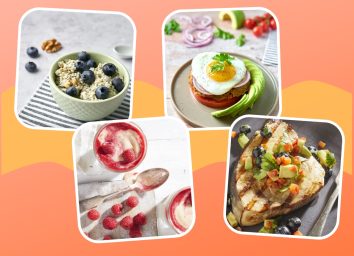20 Reasons It's Harder Than Ever to Lose Weight

Kudos: You've stuck to your clean eating plan. You're torching calories left and right by sticking to your New Year's Resolution to take a fitness class three times a week. Heck, you've even given up your one soda a day habit. And yet…you're still not losing weight. Or, at least, not at the rate you were hoping for.
Up your weight loss game by tuning into these sneaky saboteurs and discover which are major landmines in your path to healthy eating nirvana. And then challenge the excuses and remotivate yourself with the other side of the coin: 20 Reasons It's Easier Than Ever to Lose Weight.
Seamless is So… Seamless

Ding dong, your calorie overload has arrived! More than ever, we rely on handy apps and websites that let us order our dinners in a snap. Seamless and Grubhub (the same company, as of February 2015) send along more than a billion dollars in sales to restaurants every year, and other services like PostMates and Delivery.com are also taking off. We love the convenience and time-saving technology, and we're certainly not blaming these businesses for why people may gain weight. But ordering in is similar to eating out because you often wind up eating more calories, salt, and sugar than you would if cooking at home. Ordering in also becomes more of an occasion, too, either to meet a delivery minimum or just because it's so easy. While you would normally skip an appetizer with weeknight dinners, those scallion pancakes and shrimp dumplings are just a click away. Want to cook at home more but intimidated about where to even start? Check out this list of healthy kitchen staples!
New Dietary Guidelines Conflict with Old Ones
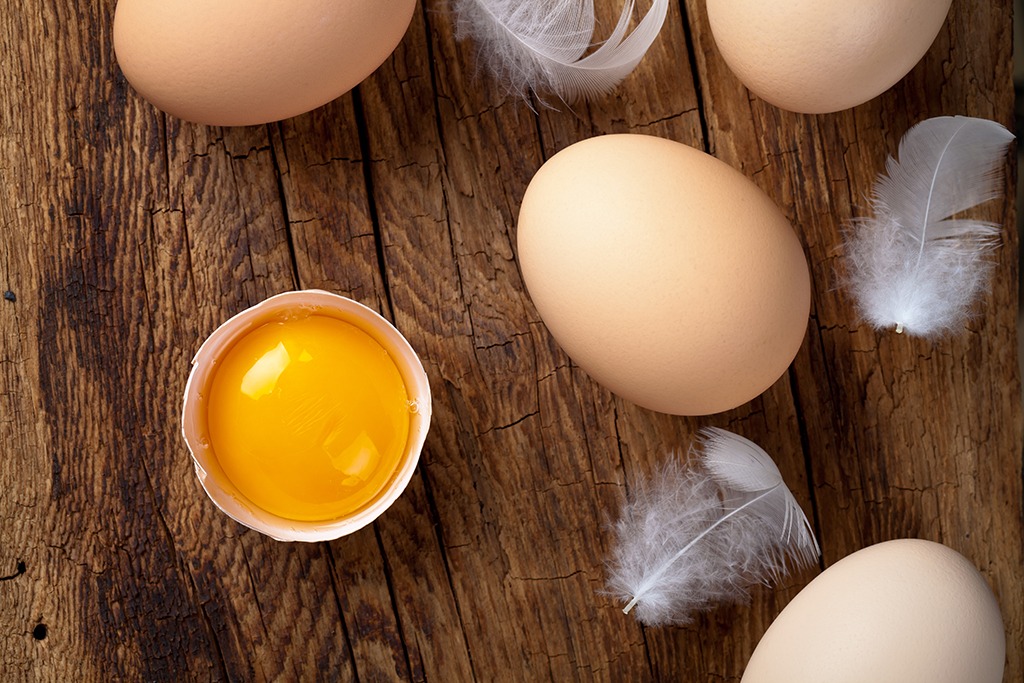
Confused about if a no-no is now good for you? And vice versa? We don't blame you. "After years of swearing off high-cholesterol foods like egg yolks, the new dietary guidelines of 2015 lifted the limitations, stating that dietary cholesterol has far less of an impact on total cholesterol than originally believed," offers Lisa Hayim, registered dietitian and founder of The WellNecessities. "While nutrition professionals can adapt to this change of information, the public has a harder time understanding how such a drastic change could be made." The result: Old habits die hard, and we hold on to our older beliefs, instead of adapting to new findings.
Our Social Media Addiction is Stretching Us Out

It's not just an unflattering photo making you wide. Along with some wildly unhealthy viral videos of recipes, social media is a reason it's harder than ever to lose weight because of the lifestyle involved. "We're more addicted to social media than ever, which often translates to snacking late at night while at the computer," explain The Nutrition Twins, Lyssie Lakatos, RDN, CDN, CFT and Tammy Lakatos Shames, RDN, CDN, CFT, and authors of The Nutrition Twins' Veggie Cure. Research published in Obesity points out that eating at night (even if you don't eat any extra calories) changes the body's circadian rhythm and leads to weight gain. No wonder this is one of the 25 Things You're Doing to Slow Your Metabolism! The Nutrition Twins build on that by noting: "Nighttime exposure to light from computers, phones, and tablets is linked to interrupted sleep and negatively impacts your body's stress hormones, your metabolism, and how much fat you store around your midsection."
Everyone Around Us is Fat
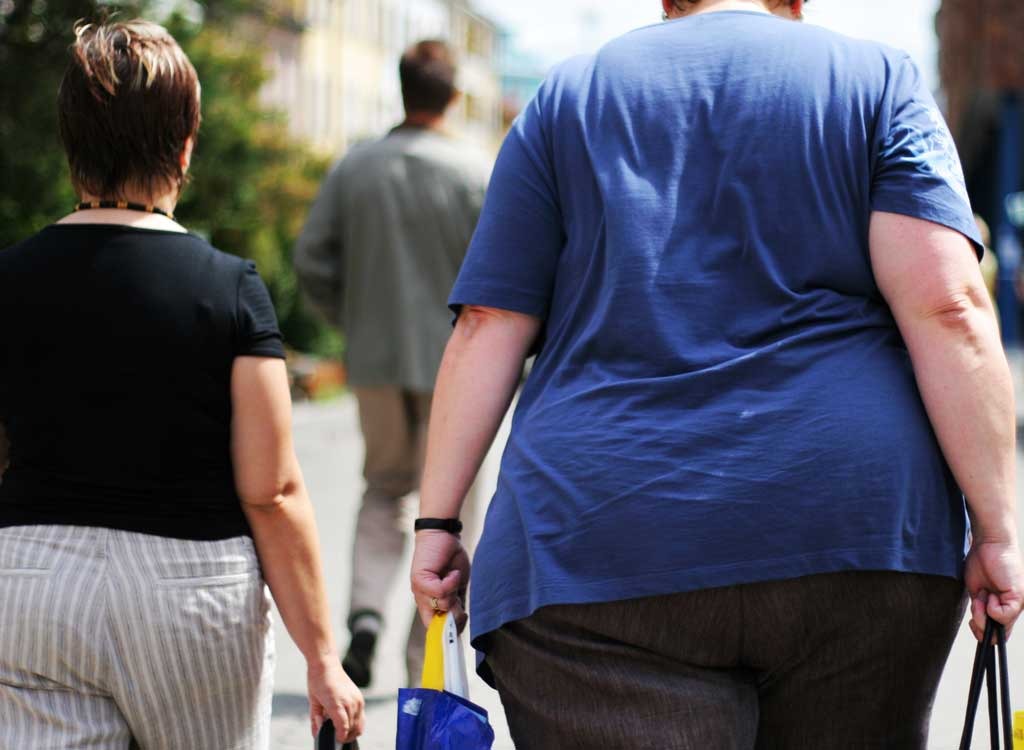
According to the National Institutes of Health, more than two-thirds of adults are considered to be overweight or obese—and as of mid-2015, the number of obese people is actually a larger group than that of the overweight-but-not-yet-obese. Study after study explains why Americans are getting rounder: We're subconsciously influenced by social norms and by those around us. Studies have even shown that when we eat with larger people, we may consume more food than what we usually do or what we would if dining with non-overweight people.
Food Scientists Aren't Always on Our Side
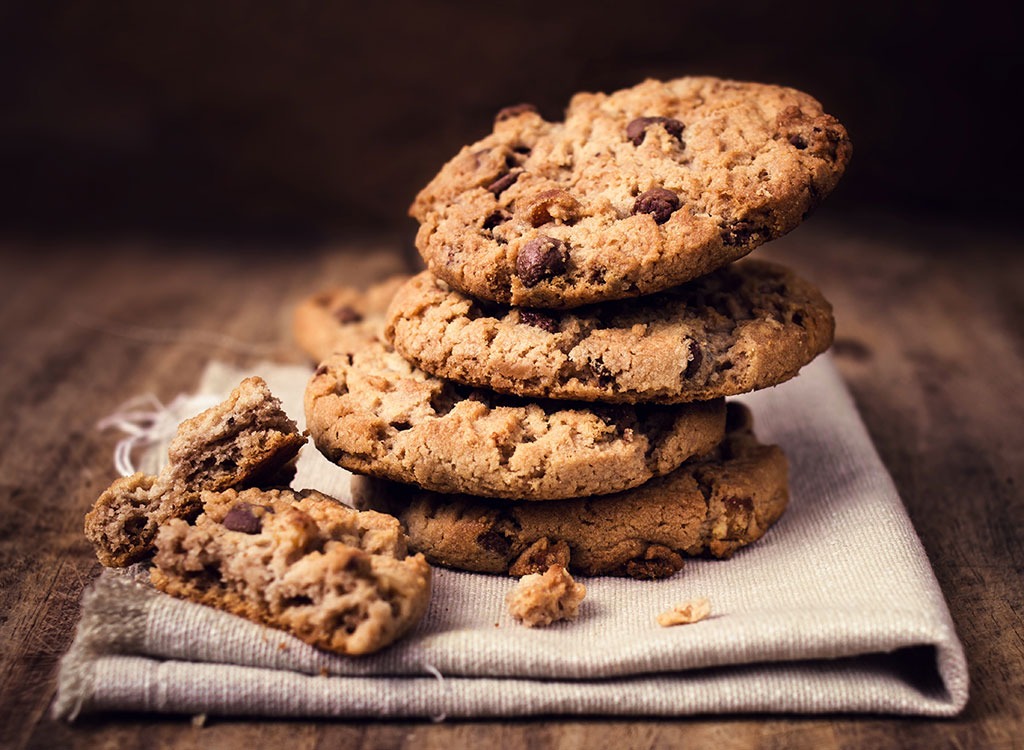
Sad, but true: "More, please!" is music to the ears of many food scientists looking for feedback on their products. "The food industry brilliantly designs their products to be hyperpalatable, ensuring their customers come back for more," states Julieanna Hever, MS, RD, CPT, a plant-based dietitian and author of The Vegiterranean Diet and The Complete Idiot's Guide to Plant-Based Nutrition. "With chemists in the lab concocting recipes with just the right level of sweet, saltiness, and fattiness, the human palate is easily convinced. This is why you literally 'can't eat just one.'" Avoid these 150 Worst Packaged Foods in America.
Your Clothes Are Lying to You

Your tag says size 4, but walk into any vintage clothes boutique and you won't get a size 4 over your head or butt. In the 80's, clothing manufacturers realized that appealing to someone's vanity (hence, "vanity sizing") could help them sell clothes—so they started lowering the size numbers as the average weight of American women started to balloon. And the numbers just keep on fibbing to you as your waistline keeps expanding. In 2001, a standard size 4 had a waist size of 25. Just 10 years later, that size 4 averaged between a waist size of 26 and 27.5. This is more common with mainstream brands like J. Crew than with high-end designers like Max Azria—which is partly why so many svelte celebs and thin models flock to luxury brands. It's where they can actually find a "real" size 0 or 2 that doesn't engulf them.
There Are More Fad Diets Than Ever Before
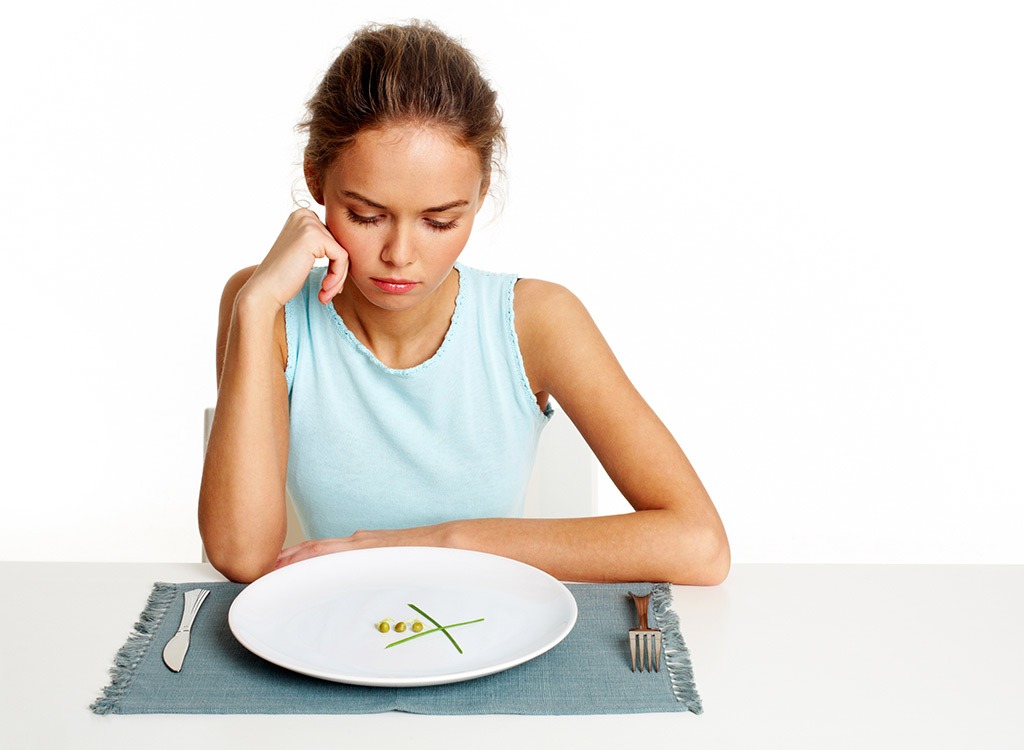
Choosing a fad diet (we suggest you don't) can be more challenging than choosing a Fitbit color—and there are a lot of colors! It can be easy to be lured into a buzzy plan—even if it's not effective or safe. "Then, when you tack on diets like gluten-free, Paleo, low-carb, low-fat, and so on, people get confused about what's best for them," the Nutrition Twins comment. "Many wind up throwing in the towel altogether and just eating whatever they feel like."
Plus-size Furniture Has Taken Over

You've probably heard about how the size of seats on public transportation and even schools are bigger than they used to be. But that trend is everywhere, from movie theaters to restaurant booths that could almost pass as twin-sized beds. "Furniture has been supersized," Hartley comments. "Chairs now are practically as big as a loveseat. So, sitting down in [these McMansion-status] chairs fails to prompt the sitter to think about weight management. The small seats of an earlier era offered a constant reminder of the need to cut back. Nowadays, we're never reminded." Even funeral caskets are now extra big to accommodate the spike in obesity.
Sugar is Slipped into Everything
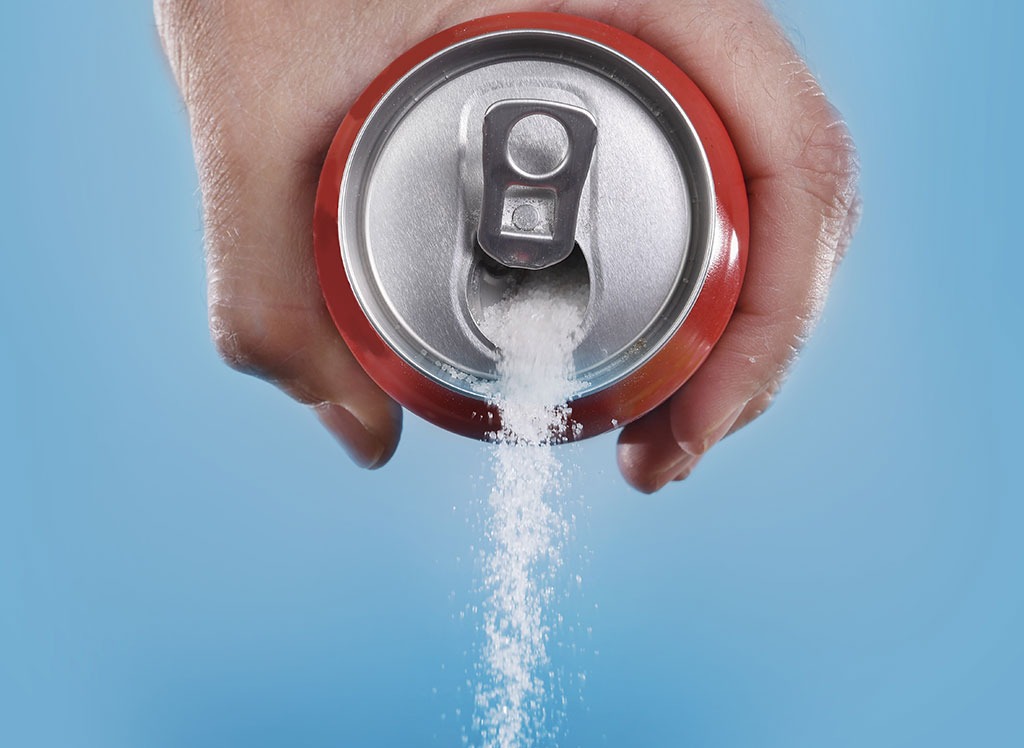
And boy, do we mean everything. Ketchup, salad dressings, protein bars, and numerous "healthy" snacks are loaded with the sweet stuff. When manufacturers dump it into our food supply, It's often labeled under the guise of high fructose corn syrup, dehydrated cane syrup, sucrose, turbinado, malodextrin, dextrose and more. People tend to think of desserts as a sign that they're in for a dose of the addictive ingredient, but one look at these 23 Restaurant Foods With Crazy-High Amounts of Sugar will make you realize how it's hiding everywhere.
Dietary Tribalism is Like a Civil War
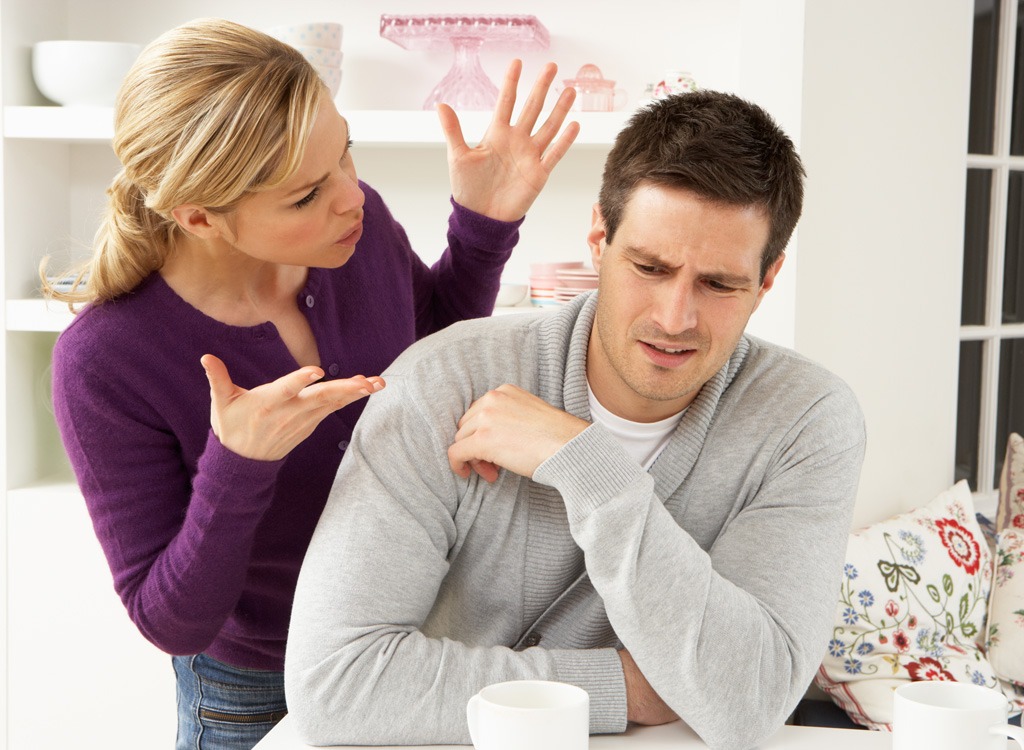
As if all the health information out there isn't confusing enough, proponents of different dietary theories (think Vegan vs. Paleo) often tear the other down as a means to build up their own following, suggests Kayleen St. John, RD at Natural Gourmet Institute, a health-supportive cooking school in New York City. "This 'Dietary Tribalism' confuses consumers—even though many dietary theories actually have a great deal in common at their core. It's usually to eat more whole foods and more plants!" Consumers often feel so overwhelmed by the contrasting information available that they either give up or go on crazy dieting benders that are more about the challenge than the lifestyle change.
Farm to Table Isn't Exactly Dollar Menu-status
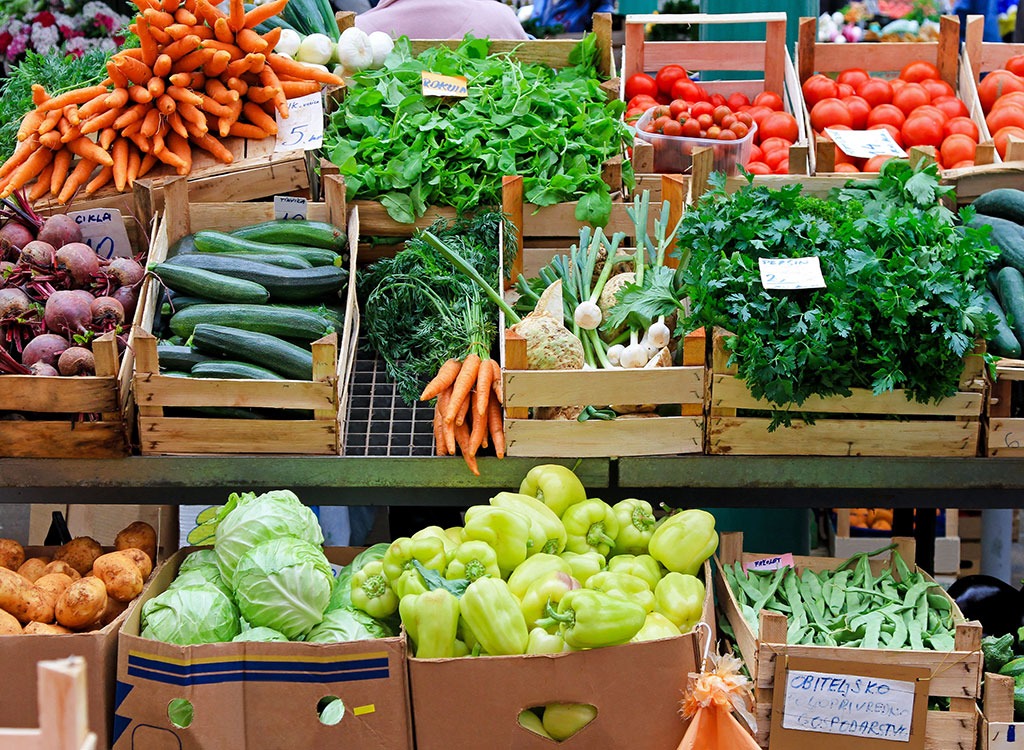
Well, it is if you literally have your own awesome garden. But if your green thumb isn't quite so seasoned, then farm-to-table can require deeper pockets. "While we know organic, local, and seasonal food is better for us, it's still the more expensive choice," Hayim says. "This makes it a battle between striving to do what's right versus being realistic about what we can actually afford." For some mealtime inspiration, check out these 17 cheap organic foods you must buy.
We Literally Can't Evolve as Fast as We Want to
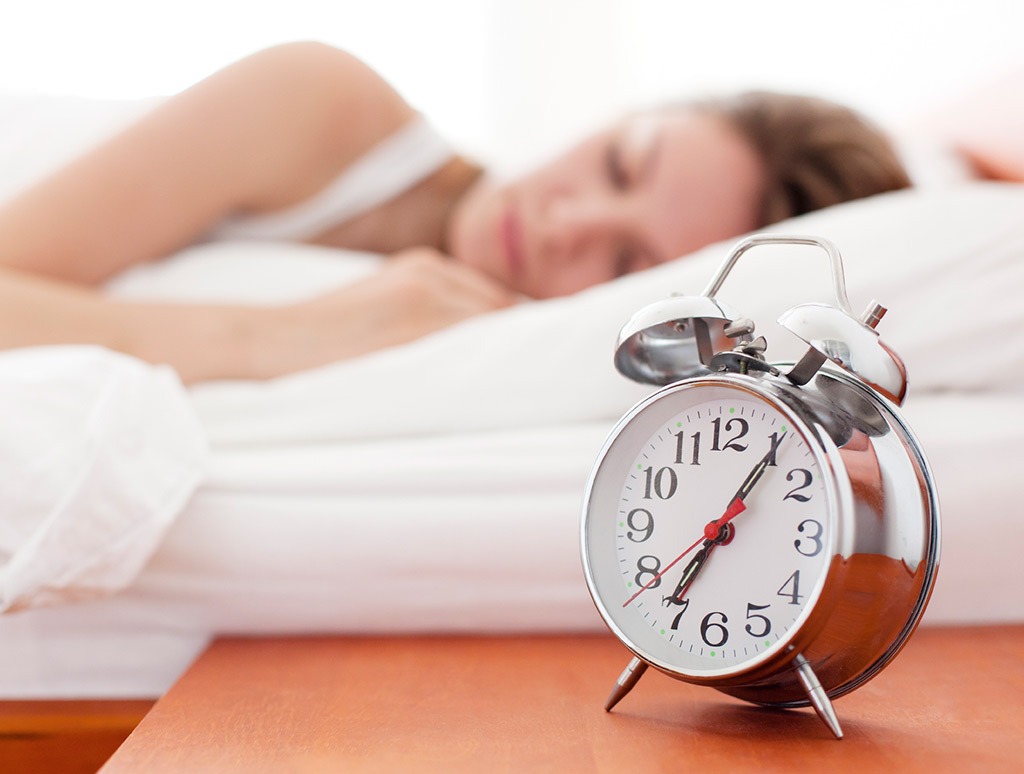
In late 2015, Evolutionary Anthropology revealed findings that humans evolved to need less sleep (seven hours, give or take) than our closest animal relatives. But the rate at which we're actively trying to do this—one less hour every 40 years—is simply too fast. Since good sleep health is directly tied to overall health and waistlines, this is a chronic problem for many people. "Our busier schedules mean that we may be getting up very early in the morning or burning the midnight oil—sometimes both," comments St. John.
Labels Still Don't Declare Added Sugars
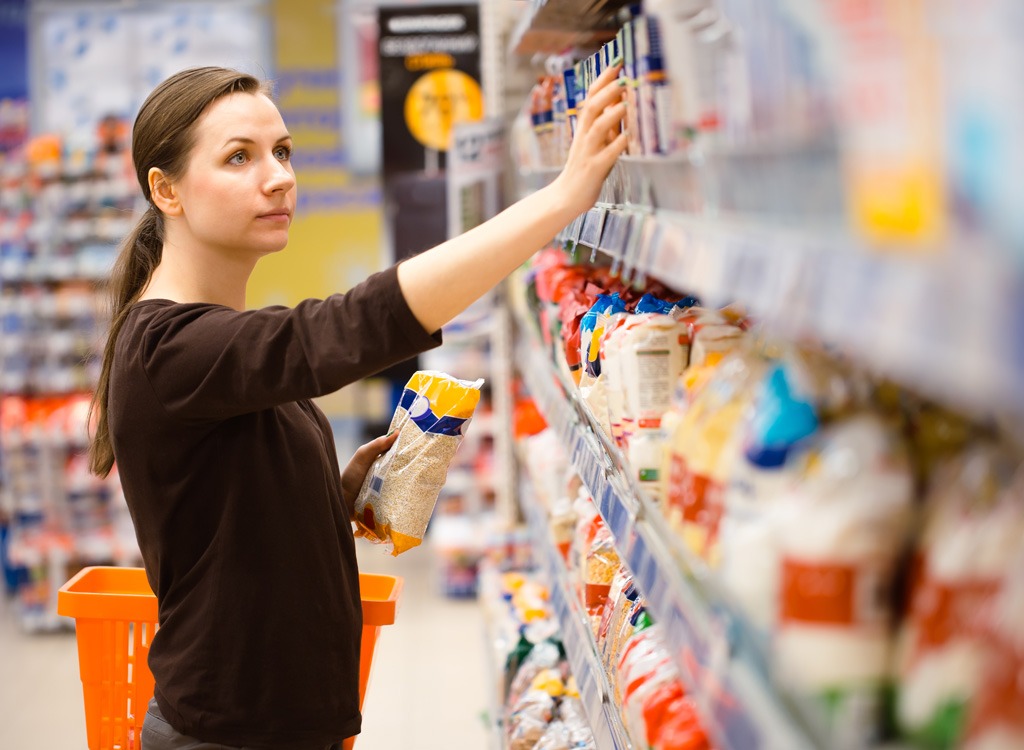
Added sugars hurt our bodies. Meanwhile, the naturally-occuring sugars in certain foods (like fruit) are okay. "The problem is that food labels [in general] don't tell you how much sugar is added versus natural," offers Hayim. "There's a proposal that the new nutrition label—the one we have now was created 20 years ago—will better reflect this kind of information." Until the government can get that launched, check out these 30 Easy Ways to Stop Eating So Much Sugar.
We're Ingesting Chemicals and Hormones
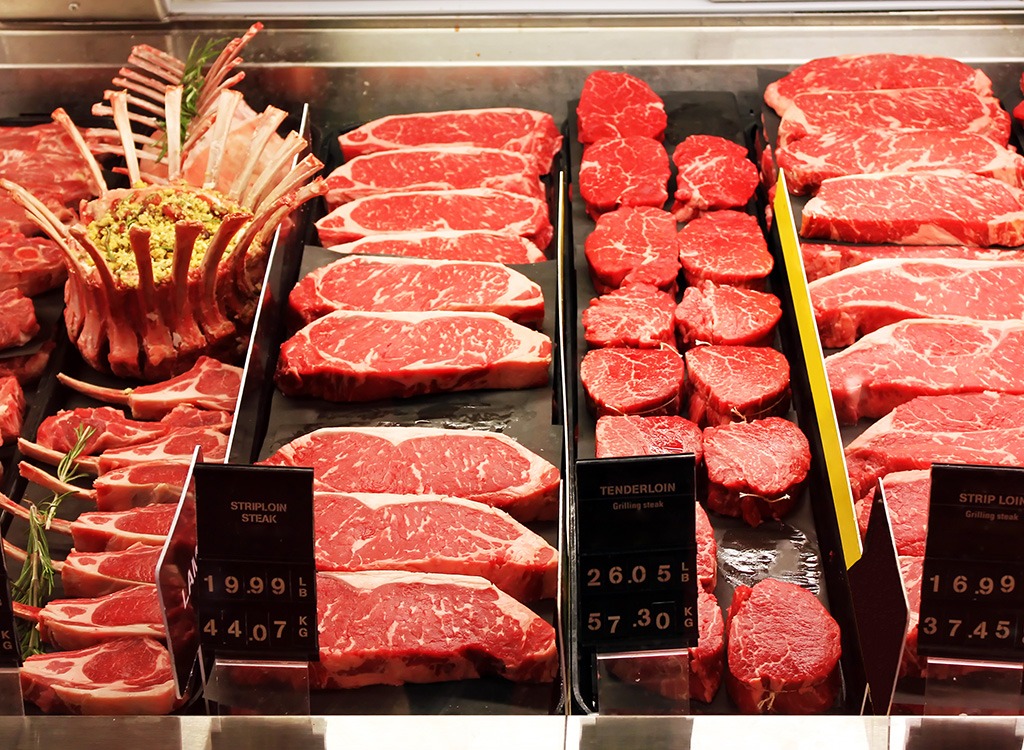
"There are many theories now about how the onslaught of chemicals and hormones found in foods—at levels never before seen—contribute to excess weight and obesity over time," shares Hever. "This may be a hidden reason many people hold onto weight and have a tough time losing it." When in doubt, follow food writer and advocate Michael Pollan's adage: "Eat food. Mostly plants. Not too much."
Current Food Labels Are Bogus
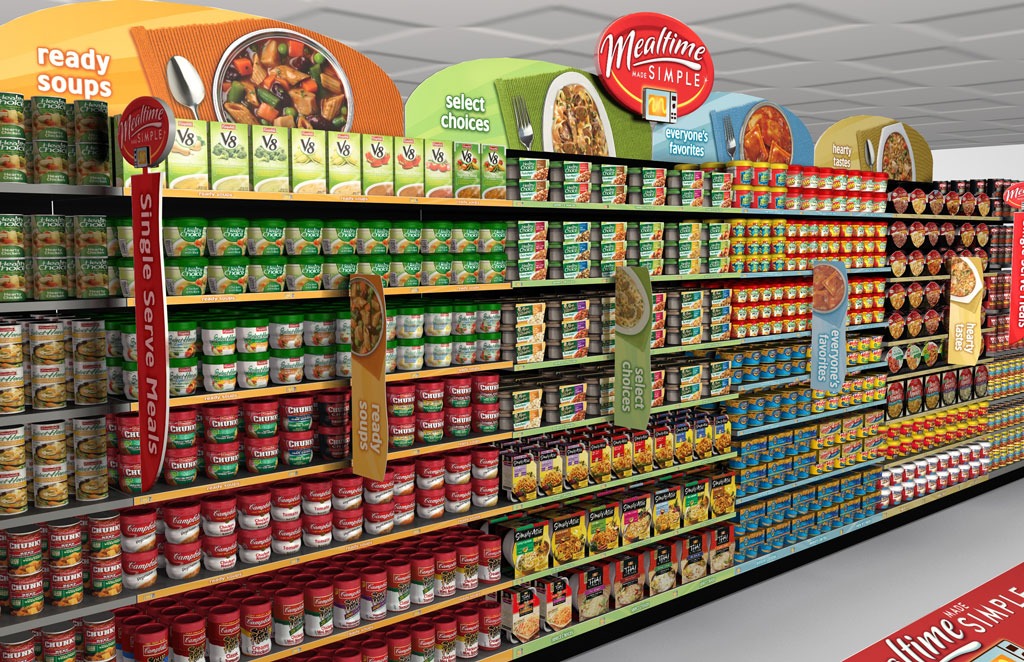
And you thought Ashley Madison was the worst perpetrator of deception? Pffft. "A lot of the nutrition labels go unregulated by the government," Hayim states. "This means that a food product can throw shocking claims on their labels [with no consequence]. For example, the last few years have been big for the phrase 'all natural.' However, there is no government definition of the term and there's little control over how it's used." On the encouraging side: The FDA has opened its ears and is actively taking feedback until May 2016 to develop stricter guidelines.
Serving Sizes Make No Sense
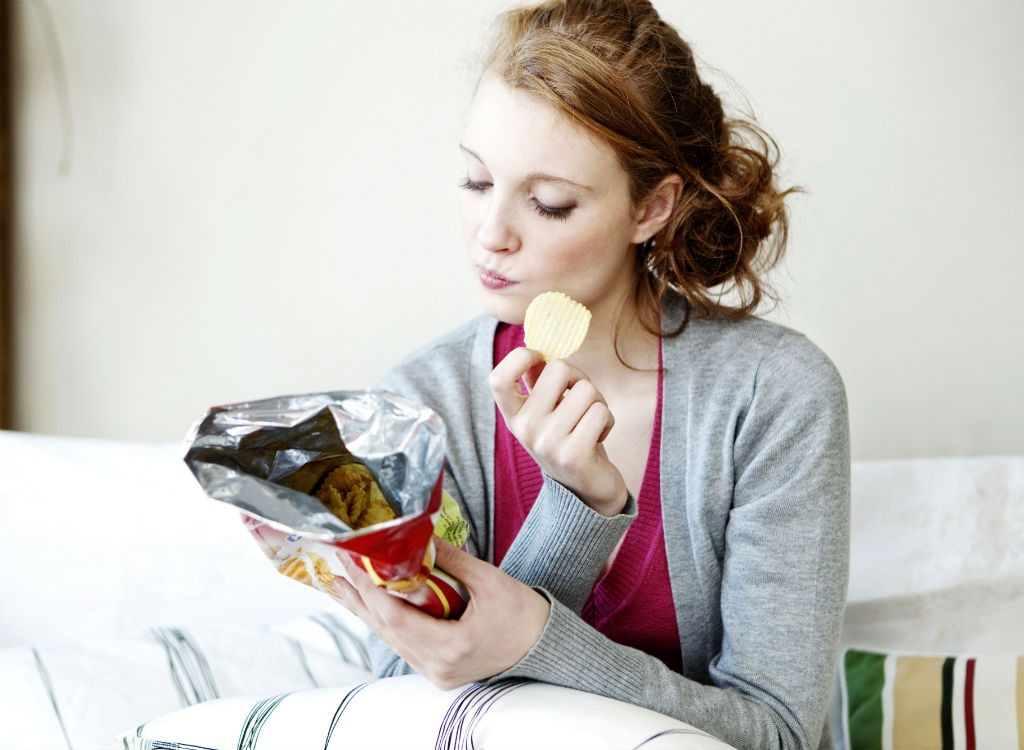
If you're going to see two options of the same food, one with "100 calories" and one marked "200 calories," which one are you going to pick? "Food companies are taking advantage of your rushed lifestyle," Hayim says. " Even as a registered dietitian, I can sometimes get deceived. I was looking at something the other day, impressed by the low numbers, until I realized it had so many more servings than another item. You've got to be a detective these days!"
We're Not Breaking a Sweat

If our iPhone screen cracks, we're sweating bullets. But when it comes to losing weight, we act like we can't be bothered. "Less than half of the U.S. population meets the recommended physical activity guidelines, meaning we are not moving enough," comments Hever. "Sedentary lifestyles promote obesity and chronic disease. We drive everywhere, sit at desks all day, and most people don't make time for formal exercise." Don't be a stat: Start by reading 15 New Ways to Sweat Your Way Slim.
Protein Shakes Have Health Halos
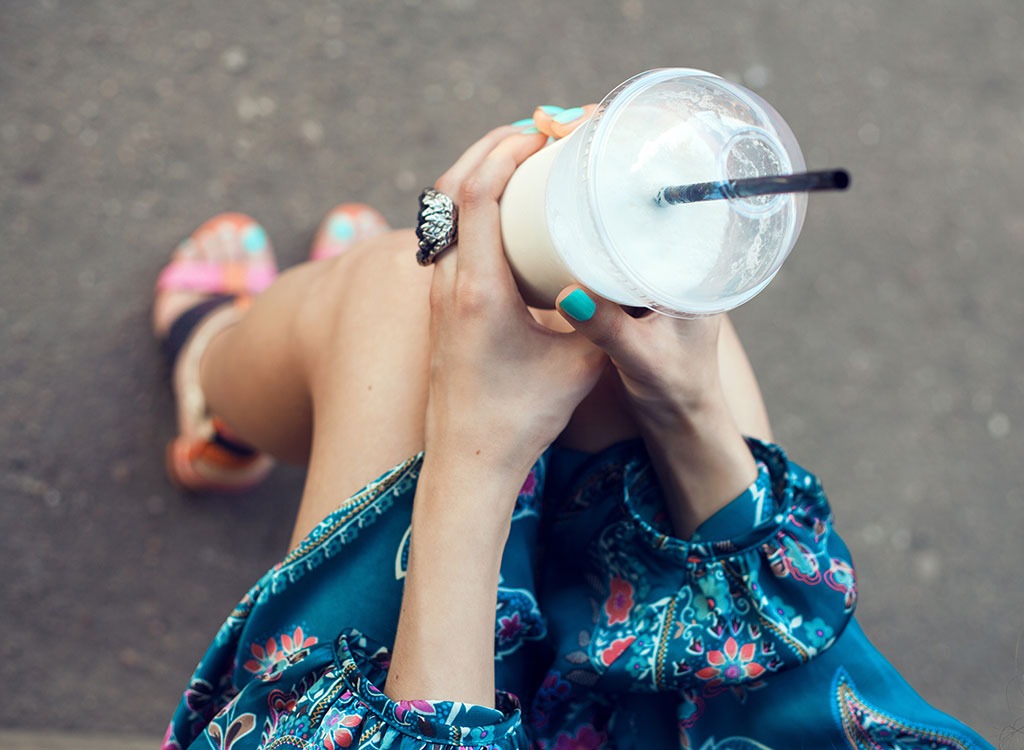
It's hard to find a juice bar that doesn't offer 'em on their menu—and we guzzle them down like mere snacks. But sucking down a hefty protein shake full of calories when you didn't just come from an intense workout is one of the easiest, sneakiest ways pound creep onto your figure. Hungry between meals? Opt for lighter fare like a handful of carrots and some almond butter.
We Get Soundbites, Not Full Stories
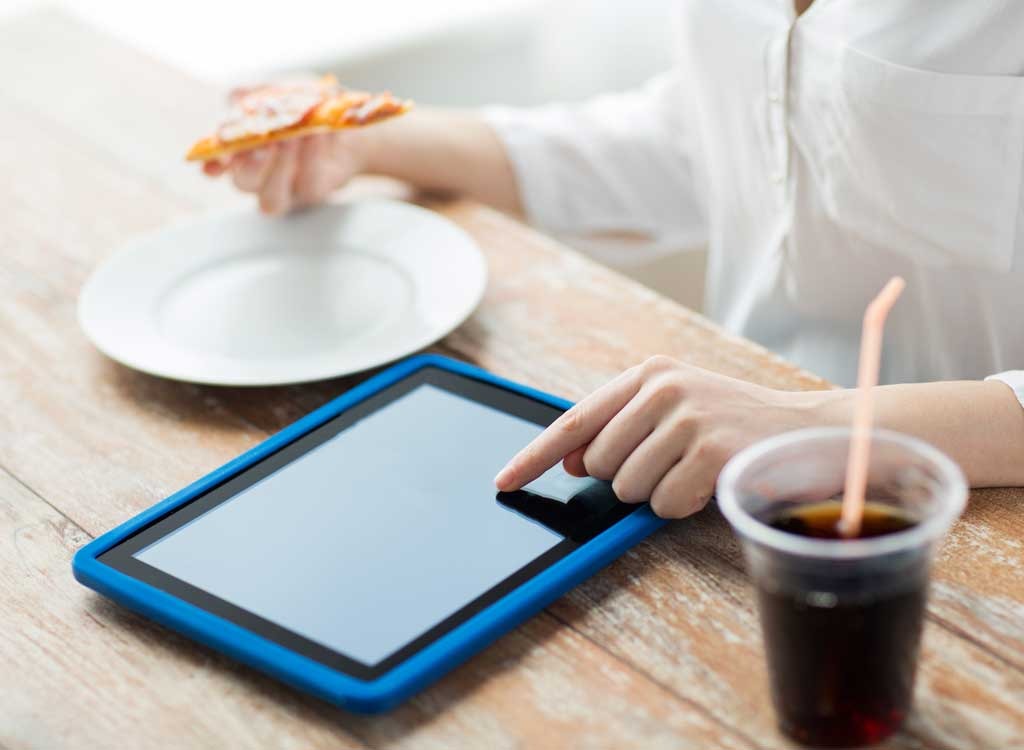
"In a world where we are inundated with information, quick headlines are all many of us are reading," Hayim says. "We're not taking in the full story, and therefore not truly understanding the science behind our dietary choices." Remember: Some studies are conducted on a super small sample size, some on animals and not humans, and some might work for one type of person but not for everyone. But anyone posting 'em to the web is probably going to give it the most shocking, hyper-specific but misleading, click-baity headlines they can. It's all part of the crazy interwebs, but don't believe everything you haven't actually read.
Cooking Shows on TV Are Too Indulgent
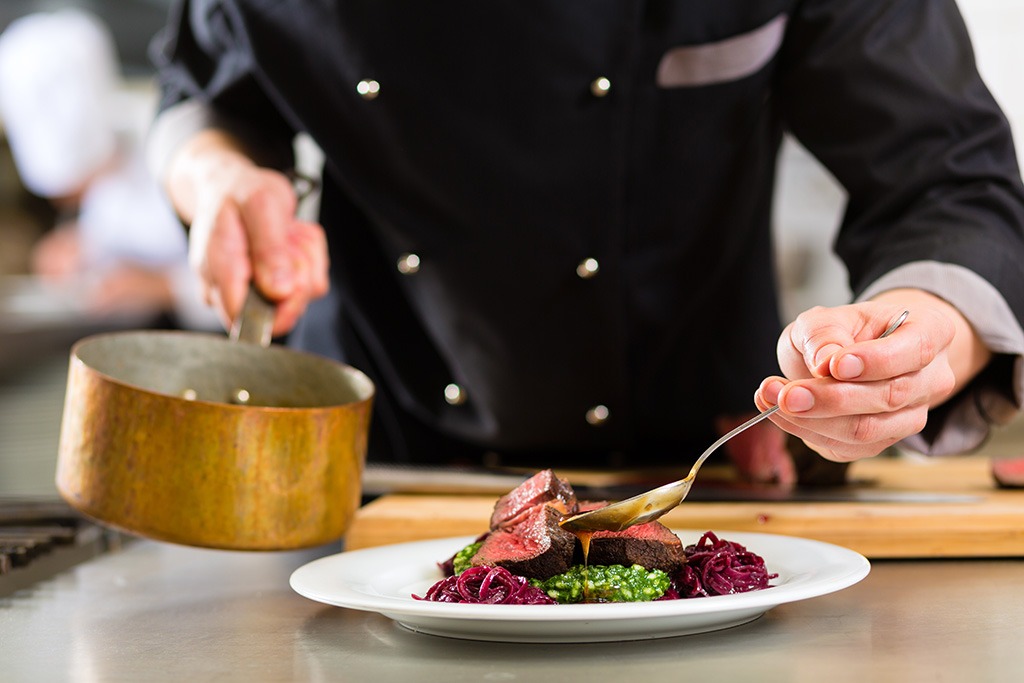
"Television recipes often contain more calories, protein, and fat than the experts recommend," says Mary Hartley, RD, a consulting nutritionist from Providence, Rhode Island. "According to a study from Cornell, watching cooking shows and then cooking from scratch is associated with a higher body-mass index (BMI). However, cooking show viewers who watch but don't cook do not have higher BMIs." Bottom line: You can watch, but don't cook the food porn.



